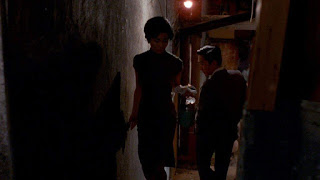In the mood for 💏
The blog of this week we need to write the mental state of ‘In the Mood for Love’. I hope that I will know the theory of French Impressionist Cinema completely after I finished this blog. In the Mood for Love is a 2000 romantic Hong Kong film written, produced, and directed by Wong Kar-wai. It tells the story of a man (played by Tony Leung) and a woman (Maggie Cheung) whose spouses have an affair together and who slowly develop feelings for each other. In the Mood for Love premiered on 20 May 2000, at the 2000 Cannes Film Festival, where it was nominated for the Palme d'Or and Tony Leung was awarded Best Actor. It is frequently listed as one of the greatest films of the 2000s and one of the major works of Asian cinema. The movie forms the second part of an informal trilogy: The first part was Days of Being Wild (released in 1990) and the last part was 2046 (released in 2004).
The French Impressionist filmmakers took their name from their painterly compatriots and applied it to a 1920s boom in silent film that jolted cinema in thrilling new directions. The devastation of World War I parlayed into films that delved into the darker corners of the human psyche and had a good rummage about while they were there. New techniques in non-linear editing, point-of-view storytelling and camera work abounded (Phil De Semlyen, 2016). The characteristics of French Impressionist Cinema is explores psychological causes; gives narration considerable psychological depth, revealing play of the character’s consciousness, concerns mental states, dreams or fantasies. The mental state mean that what the feeling and emotion of character in the film. There is a film which called ‘In the Mood for Love’ applied this theory, directed by Wong Kar Wai in the year 2000.
Two couples Mr and Mrs Chan ( Mrs Chan played by Maggie Cheung ) and Mr and Mrs Chow ( Mr Chow played by Tony Leung Chiu Wai ) move into the same building on the same day. Both spend much time alone as their respective spouses work long hours. One day they discover when talking things over that their spouses are having an affaire. The two lonely hurt people come together as friends and try to reproduce the infidelity of their husband and wife whilst analysing just how it happened. Deciding in doing so to avoid the usual clichés and above all not become like 'them' they end up by falling in love for real. In becoming what they had objected to and despised they break up and leave for different lives. In the end of the movie we learn that both of the couples have split up and are alone. Mrs Chan has a son which we assume could be Mr Chow's although their 'union' was never actually shown, but implied. A divine movie with a beautiful haunting music and fabulous photography (Murray, 1990-2018).
French impressionist cinema is focus on the feeling and emotion of the character. It manipulates plot time and subjectivity. For example, showing flashback or memories which represent the experience of the character. Besides that, the camera movement of this theory will smooth and slow, brought about by the frame mobility.
Firstly, Mr. Chow’s wife is given presence by the repetition of the shot of a window at her place of employment; by association, every time we see the window and hear her voice, we immediately know it’s her. Then, the part show the repeating scene is Mr. Chow’s always not at the office when Mr. Chow come to find her and want to fetch her back. This part show the mental state of suspect of Mr. Chow for the betrayal of his wife.
Secondly, the scene that repeated is Mr Chow want to close toward with Mrs. Chan but Mrs. Chan always refuse him. The scene have been flashback for a few time with different actions made by Mr. Chow. This part show the mental state of struggle of Mrs. Chan want to fall in love with Mr. Chow or not because of betrayal of her husband.
Besides that, there is repeating scene and show with slow motion of the daily life of Mr. Chow and Mrs. Chan. They have passed each other at the stair; buy the noodles; eating alone. It is showing the boring life and hoping love of both Mr. Chow and Mrs. Chan.
In additional, when Mrs. Chan receive the call from Mr. Chow; next shot show Mrs. Chan go to the accommodation of Mr. Chow with taxi; immediately, next shot show Mrs. Chan arrive the outside of the Mr. Chow’s room but she pretend to calm when she face Mr. Chow. This part show the mental state of anxiously of Mrs. Chan but cannot realize by Mr. Chow. It is an ambivalent feeling.
Next scene is when Mrs. Chan stay overnight at the room of Mr. Chow. This part show the mental state of anxious and worried. They afraid that the neighbour will find their relationships.
For the slow motion, there is a scene when Mr. Chow sitting in his office. The smoke above his head has been show in slow motion, it represents the feeling of frustrated on Mr. Chow. The mental state of Mr. Chow after he realized that his wife has betrayal their marriage.
Bibliography
Murray, S. (1990-2018). IMBD. Retrieved from In the Mood for Love: http://www.imdb.com/title/tt0118694/plotsummary#synopsis
Phil De Semlyen, I. F. (2016, August 8). Empire. Retrieved from Movie movements that defined cinema: French Impressionism: https://www.empireonline.com/movies/features/french-impressionism-movie-era/
"Images – In the Mood for Love". imagesjournal.com. Retrieved 13 March 2016.
"Director's Statement". In the Mood for Love official website. Archived from the original on 7 August 2010. Retrieved 7 August 2010.









Comments
Post a Comment